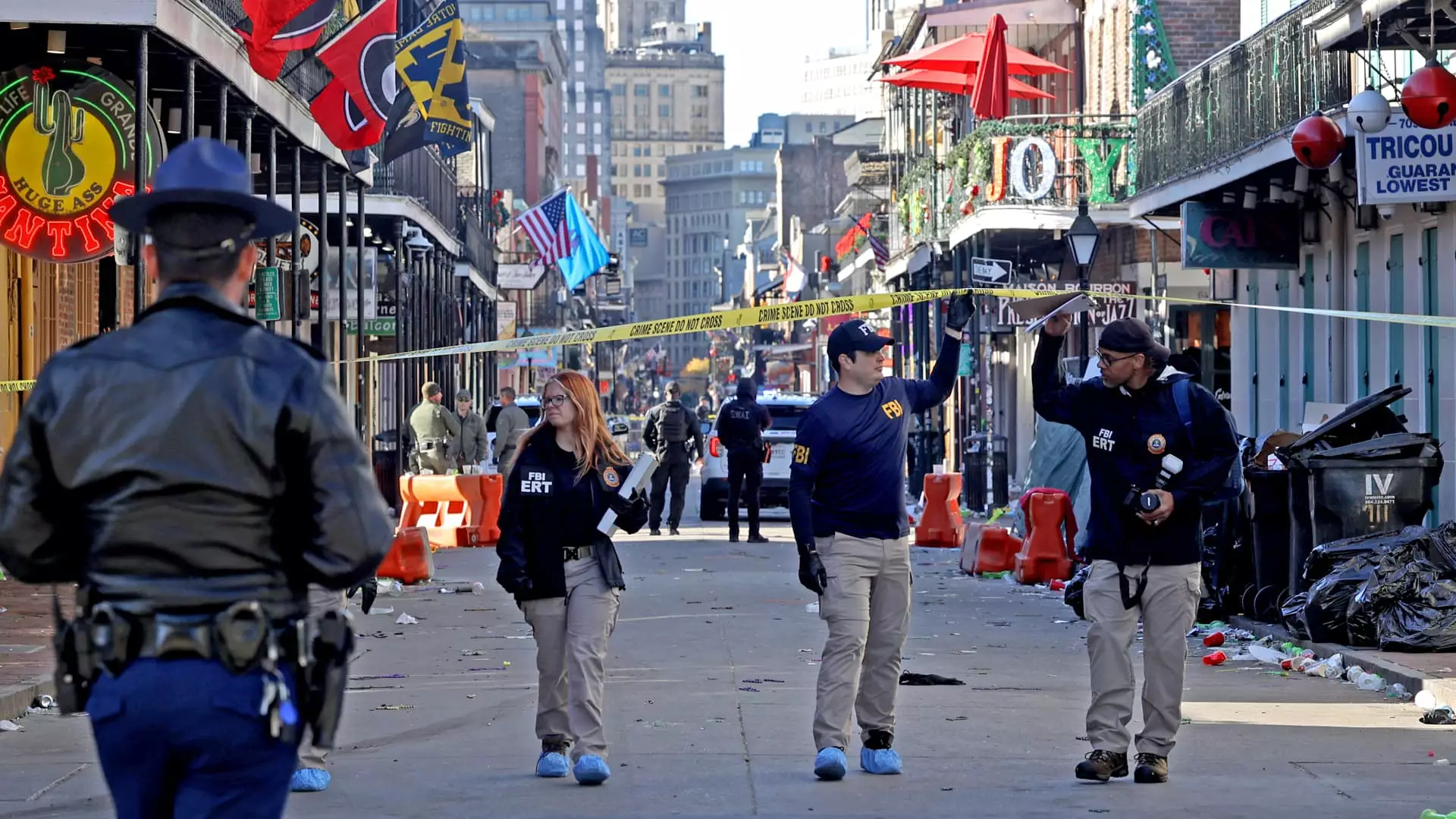In the wake of two tragic incidents on New Year’s Day, authorities are piecing together details that could reveal a deeper connection between the events unfolding in New Orleans and Las Vegas. Recent reports indicate a potential military background of the individuals involved, leading to investigations of both incidents as acts of terror. The intertwining of these narratives underscores pressing questions about security in public spaces and the implications of rental vehicles in acts of violence.
What should have been a festive celebration on New Orleans’ renowned Bourbon Street quickly spiraled into chaos early on January 1, when a pickup truck, displaying an ISIS flag, intentionally plowed into crowds, resulting in 15 fatalities and injuring at least 30. Witness accounts painted a harrowing picture of the aftermath, where bodies lay scattered, emphasizing the sheer horror that struck a city synonymous with vibrant nightlife. Police Superintendent Anne Kirkpatrick emphasized the premeditated nature of the attack, declaring that the driver “was trying to run over as many people as he possibly could.”
This tragic event not only brought grief to New Orleans but also raised significant concerns about public safety and the adequacy of protective infrastructure. Just hours after the New Orleans attack, a Tesla Cybertruck exploded outside the Trump International Hotel in Las Vegas, heightening the sense of vulnerability felt in public spaces across the nation.
The FBI’s investigation has taken an urgent turn as authorities examine potential military ties between the suspects involved in the New Orleans ramming and the Las Vegas explosion. The primary suspect in the New Orleans incident, Shamsud-Din Jabbar, was a former Army veteran with a background in human resources and information technology. Officials have identified that both attackers seemingly had prior military experience, a common denominator that raises alarms about the militarization of violence in domestic spaces.
As federal agents scrutinize connections, reports reveal that both suspects had rented vehicles from the same company, Turo. This alarming detail emphasizes potential vulnerabilities within rental practices and the mechanisms allowing such tragedies to unfold. Turo’s cooperation with law enforcement in the investigation adds a layer of complexity to the event as investigators dive deeper into the logistics surrounding the vehicles used in both attacks.
The desire to create safe and enjoyable environments for celebrations is now shadowed by fears of future attacks. In light of the recent tragedy, New Orleans Mayor LaToya Cantrell highlighted the shortcomings in the protection of pedestrian areas, specifically mentioning that construction of bollards intended to shield pedestrians was incomplete at the time of the attack. With the city gearing up to host the Super Bowl shortly, there’s an urgent need to reassess protocols aimed at securing public festivities.
As the investigation progresses, the role of law enforcement post-attack has also come under the spotlight. Following the New Orleans disaster, heightened security measures were implemented around Trump International Hotels in response to the Las Vegas explosion, showcasing a ripple effect in security policies. The convergence of these two events has triggered alarm bells about the effectiveness and preparedness of law enforcement agencies to respond to coordinated threats.
In the days following the incidents, mourners flocked to Bourbon Street to pay their respects, reflecting the community’s resilience amid tragedy. The FBI’s ongoing investigation is crucial not only for understanding the motives and connections between those involved but also for ensuring justice for victims and their families. The attention directed at the Las Vegas explosion reveals an interconnectedness that law enforcement must navigate carefully as they search for an overarching narrative linking these violent acts.
As the landscape of American public safety continues to evolve, parallels drawn between military backgrounds of attackers and acts of domestic terrorism cannot be overlooked. Policymakers must take heed of these patterns as they devise strategies aimed at preventing future atrocities. The unfolding investigation serves as a sobering reminder of the fragility of safety and the importance of vigilance in preserving peace during public celebrations.
As investigations continue and communities grapple with the aftermath, the hope for a comprehensive understanding of the factors leading to these tragic events remains paramount. The scenarios in New Orleans and Las Vegas emphasize the need for robust security measures, effective coordination between agencies, and a commitment to safeguarding the freedoms that define American life.

